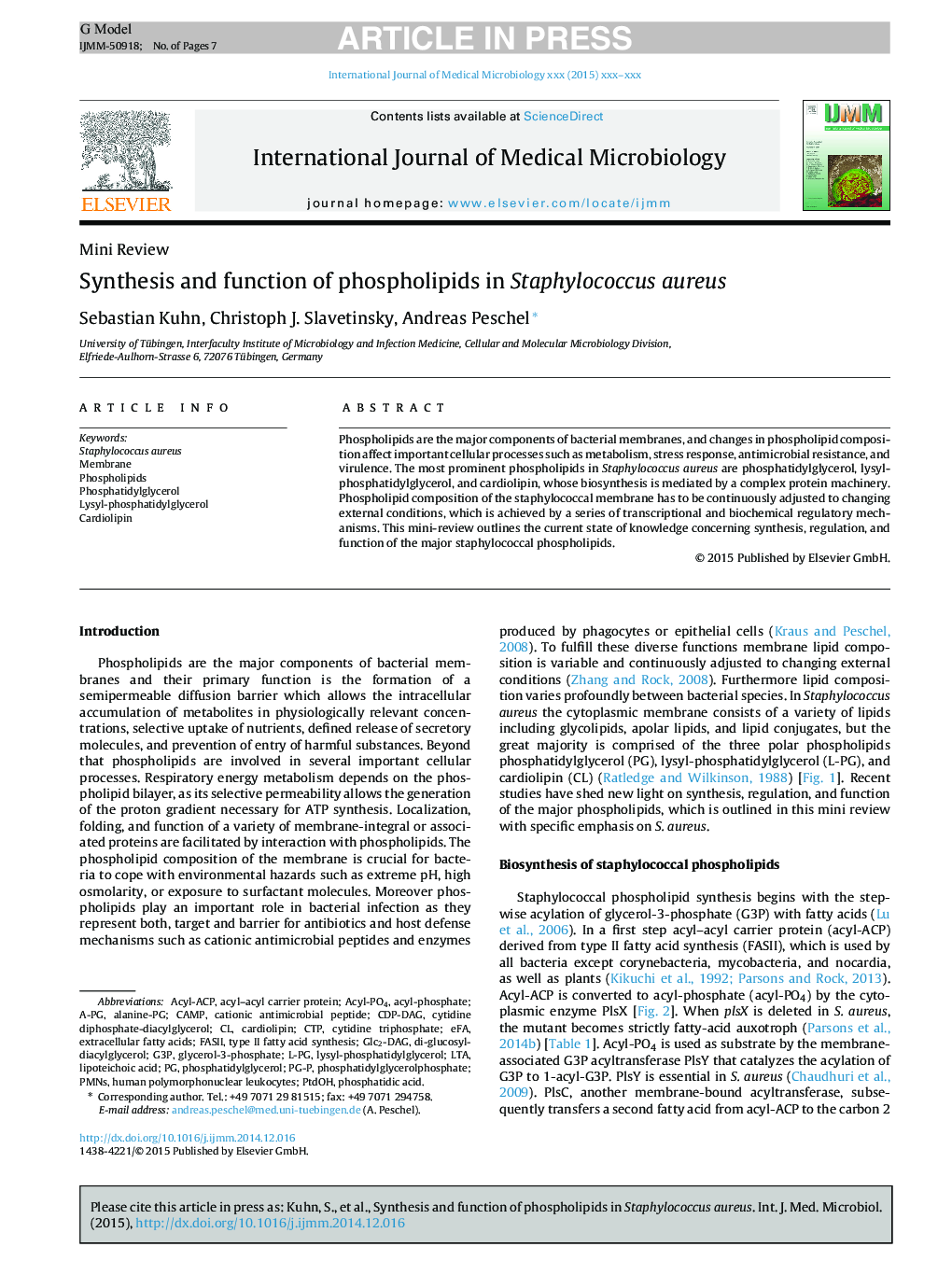| Article ID | Journal | Published Year | Pages | File Type |
|---|---|---|---|---|
| 8385283 | International Journal of Medical Microbiology | 2015 | 7 Pages |
Abstract
Phospholipids are the major components of bacterial membranes, and changes in phospholipid composition affect important cellular processes such as metabolism, stress response, antimicrobial resistance, and virulence. The most prominent phospholipids in Staphylococcus aureus are phosphatidylglycerol, lysyl-phosphatidylglycerol, and cardiolipin, whose biosynthesis is mediated by a complex protein machinery. Phospholipid composition of the staphylococcal membrane has to be continuously adjusted to changing external conditions, which is achieved by a series of transcriptional and biochemical regulatory mechanisms. This mini-review outlines the current state of knowledge concerning synthesis, regulation, and function of the major staphylococcal phospholipids.
Keywords
Related Topics
Life Sciences
Biochemistry, Genetics and Molecular Biology
Biochemistry, Genetics and Molecular Biology (General)
Authors
Sebastian Kuhn, Christoph J. Slavetinsky, Andreas Peschel,
